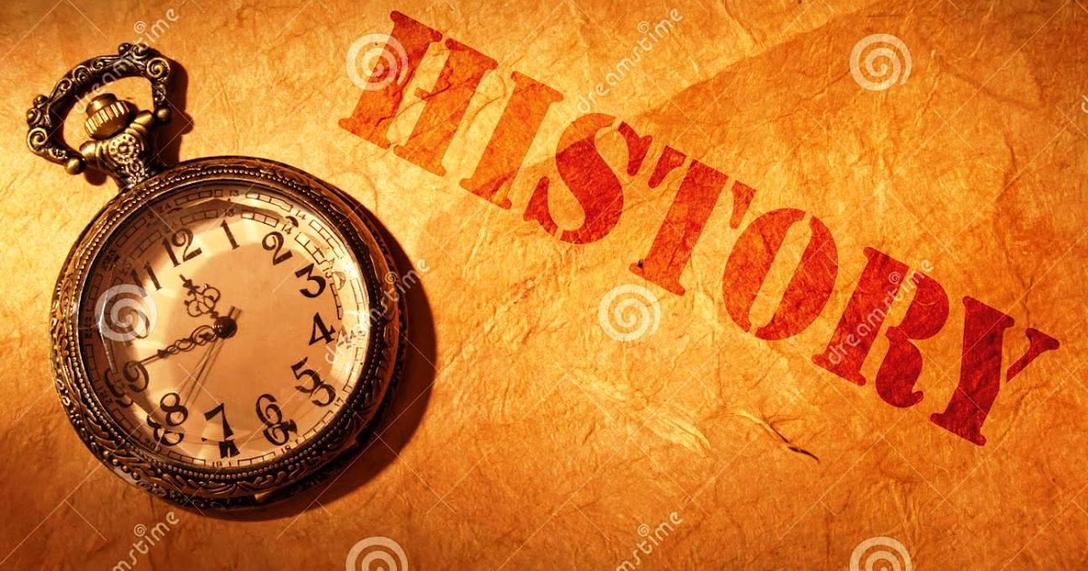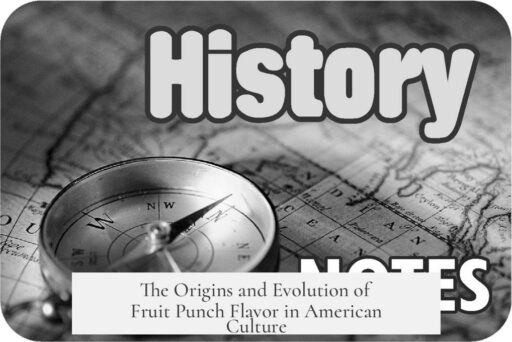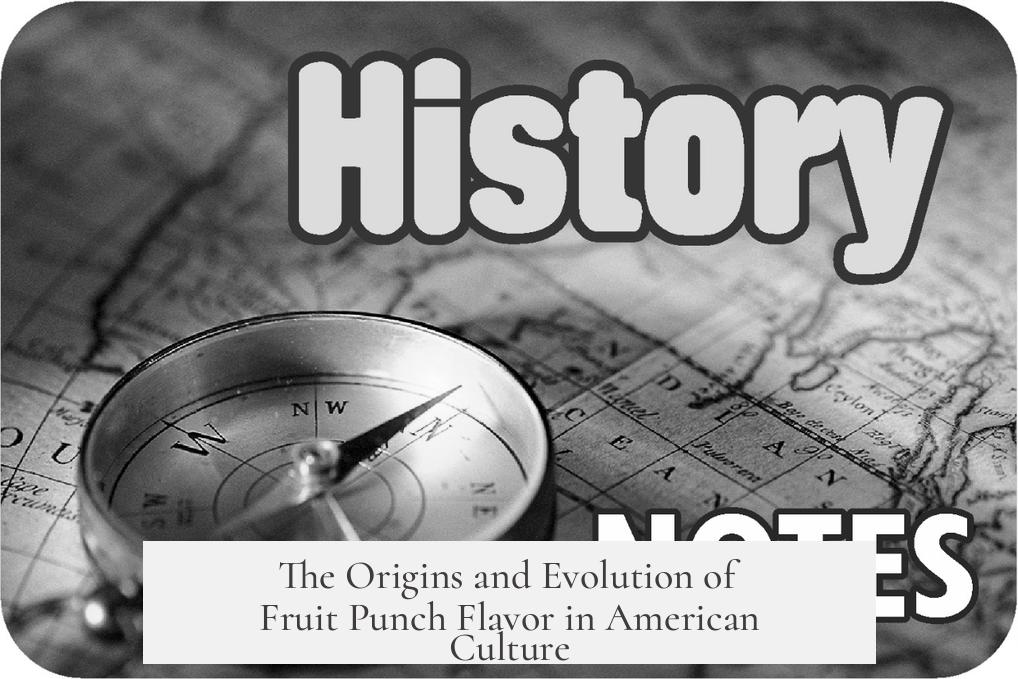The flavor “fruit punch” originates from a blend of historical beverage traditions, evolving over centuries from 1600s alcoholic punches to 20th-century commercial soft drinks. It stems from the combination of fruit syrups, citrus, and sweeteners developed in early punches, with influence from preservation techniques like shrub syrups and tropical fruit mixtures popularized in the United States by products such as Hawaiian Punch.

The earliest root of fruit punch flavor traces back to the alcoholic punches of the 1600s through the early 1900s. These punches combined liquor such as brandy, rum, or palm Arrack with citrus fruits like lemons or limes and sugar. Over time, recipes expanded to luxury ingredients such as oranges, pineapple, raspberries, and even champagne. An 1862 recipe from Jerry Thomas’s Bar-Tender’s Guide includes wine, sugar, orange, lemon juice, pineapple slices, and raspberry or strawberry syrup. This blend of red fruit syrups and citrus created a flavor foundation resembling modern fruit punch.
A significant influence came from the “shrub” syrup tradition. Shrubs are syrups made by soaking excess fruits in vinegar, then sweetening and reducing to concentrate flavor. These syrups were consumed diluted with water, soda, or sometimes alcohol. Shrubs helped inspire fruit punch by demonstrating how fruit syrups could flavor beverages, incorporating tartness from vinegar and the sweetness of fruit extracts.

The commercial soft drink category introduced fruit punch as a syrup concentrate designed for easy mixing with water or soda. Hawaiian Punch, created in 1934 by the Pacific Citrus Products Company in Fullerton, California, is the earliest notable commercial fruit punch. It was initially sold as a syrup to top ice cream but quickly gained popularity as a mixed drink. Hawaiian Punch’s original flavor combined tropical fruits such as pineapple, orange, passionfruit, guava, and papaya. These ingredients—claimed to be sourced from Hawaii—contributed to the product’s name and became a benchmark for the fruit punch flavor profile in American markets.
Around the same time, another syrup called fassionola emerged, complicating the flavor’s origin story. Fassionola is a red fruit syrup primarily flavored with passionfruit and other tropical juices. It was invented circa 1933 by Donn Beach, founder of the iconic tiki bar Don the Beachcomber’s. This syrup was used in tiki cocktails and bears a striking resemblance in flavor to Hawaiian Punch concentrate. Though exact formulas for fassionola remain secretive, it showcased the tropical fruit combinations—passionfruit, orange, guava—that align with fruit punch tastes.

Attempts to trace fruit punch back to a single inventor or source often mention Queen Victoria supposedly creating an alcohol-free punch. However, no credible evidence supports this claim. Punch recipes before the 20th century depended on alcohol as a core component, and removing it required significant recipe adjustments. Hence, fruit punch as known today is a modern evolution, not a direct product of Victorian preferences.
| Aspect | Details |
|---|---|
| 1600s–1900s Punches | Alcoholic, citrus, sugar, fruit syrups; expanded ingredients like pineapple and raspberries |
| Shrub Syrups | Fruit soaked in vinegar, sweetened, reduced to syrups; base for diluted fruit beverages |
| Hawaiian Punch (1934) | Commercial fruit punch syrup combining pineapple, orange, passionfruit, guava, papaya |
| Fassionola Syrup | Red tropical fruit syrup used in tiki cocktails; similar to Hawaiian Punch concentrate |
| Debunked Myths | No evidence Queen Victoria invented alcohol-free fruit punch |
The flavor profile of fruit punch results from blending various fruit juices and sweeteners. Citrus notes from lemon and orange add brightness. Pineapple and passionfruit contribute tropical sweetness. Red fruit syrups provide color and richness. The synthetic versions found in soft drinks today mimic these combinations, often using artificial flavorings to replicate natural fruit blends from the original punches and syrups.

Hawaiian Punch paved the way for fruit punch as a recognizable commercial flavor in the United States. It inspired follow-up products like Hi-C and Minute Maid fruit punches introduced in the 1940s. These beverages captured the essence of punch’s fruity, citrus, and sweet characteristics but without alcohol. The evolution reflects consumer preferences shifting toward non-alcoholic flavored drinks while retaining the complexity and balance of the original punch blends.
Understanding fruit punch’s development reveals how it is less a single flavor and more a category shaped by history, culture, and commerce. Its roots are in practical and festive drink-making, combining preserved fruit syrups, native citrus, and imported tropical fruits into a unified taste. This flavor heritage explains why fruit punch tastes like a harmonious blend of several fruit notes rather than one distinct fruit.

- Fruit punch flavor derives from 1600s-1900s alcoholic punches using citrus and fruit syrups.
- Shrub syrup preservation laid groundwork for fruit syrup-based drinks.
- Hawaiian Punch (1934) was the first commercial fruit punch concentrate in the U.S.
- Fassionola syrup from tiki culture shares similar tropical fruit flavor notes.
- Myths about Queen Victoria inventing fruit punch are unsupported.
- Fruit punch is a blend of multiple fruit flavors, including tropical and citrus fruits.
- Commercial products replicate early punch flavor profiles without alcohol for mass appeal.
Where Does the Flavor “Fruit Punch” Come From?
If you’ve ever wondered where the classic “fruit punch” flavor originates, you’re not alone. This popular taste, often synonymous with childhood memories of summer picnics and school parties in the United States, traces back to a fascinating history steeped in tradition, tropical fruits, and cocktail culture.
So, let’s dive into the juicy story behind “fruit punch”—a flavor that seems simple but packs centuries of culinary evolution packed inside a single sip.
The Boozy Birth of Fruit Punch: From 1600s to Early 1900s
The flavor roots started not with kids’ drinks but with grown-up party staples: alcoholic punches. The 1600s marked the advent of punch—an intriguing mix of spirits, citrus, and sugar. Early versions contained things like lemon or lime juice, sugar, and liquor such as palm Arrack, brandy, or rum.
A classic 1862 punch recipe from Jerry Thomas’s Bar-Tender’s Guide reads like a tropical dream: 1 quart bottle of wine, 1/4 lb sugar, 1 orange, juice of a lemon, 3 slices of pineapple, and a wine-glass of raspberry or strawberry syrup.
What’s notable here? The bright, vivid flavors from citrus, tropical fruits, and red syrups set the taste template for fruit punch as we know it. This was a sparkling, fruity, somewhat sweet concoction that made any gathering more festive. And although booze was the main attraction, the medley of juice and syrup laid the groundwork for future, non-alcoholic twists.
Shrub Syrups: The Vinegary Ancestors
If you thought punches were the sole pioneers, shrubs enter the scene with a unique twist. These fruit syrups came from soaking fruits in vinegar, sweetening them, and then reducing the mixture to a syrup.
This syrup was commonly diluted in water, soda water, or sometimes boozy elixirs like rum and brandy. Shrubs created a deliciously tart, sweet, and complex fruit flavor. Think of shrubs as preservation meets refreshment—a tangy cousin of the punch that kept fruit flavors alive long after harvest.
These fruity vinegars paved the way for dilution methods central to fruit punch, making it easier to serve fruity, refreshing drinks in larger quantities—without the punch-in-the-face alcohol!
Hawaiian Punch: The Soft Drink Superstar
The leap from backyard punches to commercial fruit punch came in 1934, with the debut of Hawaiian Punch by the Pacific Citrus Products Company in California. This was the first to market the fruit punch flavor as a soft drink concentrate.
Interestingly, Hawaiian Punch didn’t start as a drink. It was initially a syrup designed to pour over ice cream. Surprisingly, thirsty customers began mixing it with water, inventing a new way to enjoy fruit punch.
Ingredients claimed for original Hawaiian Punch include pineapple, orange, passionfruit, guava, and papaya—fruits imported from Hawaii, lending the drink its tropical name and vibe.
This concentrate captured the essence of tropical fruit fusion—sweet, tangy, and vibrant—redefining fruit punch for generations of Americans.
Fassionola Syrup and the Tiki Bar Twist
The mystery deepens with fassionola syrup, a red fruit syrup reportedly bursting with passionfruit and other fruit juices. It pops up in tiki cocktail recipes, mostly shrouded in secrecy, but it tastes remarkably like Hawaiian Punch.
Donn Beach, creator of the iconic Don the Beachcomber’s tiki bar in the 1930s, is credited with inventing fassionola syrup around Hollywood’s golden years.
Its simultaneous existence with Hawaiian Punch in 1930s California hints at a sweet rivalry or perhaps a shared inspiration from tropical fruit blends—especially passionfruit, orange, and guava juices from Hawaii. This leaves fruit punch’s history a little foggier but-rich in tropical flavor imagination.
Busting Myths: No Royal Credit Here
Some stories claim that Queen Victoria invented fruit punch because she preferred her punch alcohol-free. Fact-check? Nope. Reliable evidence is totally missing, and any punch without liquor would need serious recipe surgery to even resemble traditional punch.
So, sorry to disappoint if you were hoping for a regal origin story. Fruit punch is more a tale of tropical fruits meeting clever preservation and mixology rather than crowned invention.
Why Does Fruit Punch Taste the Way It Does Today?
It’s the product of centuries of evolution—from spirited lemon-lime mixtures combined with rum and brandy, to shrub syrups that preserved fruit’s tartness, to tropical fruit syrups giving punch its signature exotic flavor.
Even today, when you crack open a fruit punch drink, you’re tasting echoes of citrus, raspberry, passionfruit, guava, and pineapple—flavors once considered luxuries.
Tips for Enjoying and Creating Your Own Classic Fruit Punch
- Mix fruit syrups or juices with sparkling water or soda for a quick homemade fizzy fruit punch.
- Try adding a splash of passionfruit syrup or guava juice to mimic the tropical notes of Hawaiian Punch and fassionola.
- Combine citrus fruits like orange and lemon with a berry syrup to channel the vintage 1862 punch recipe.
- If feeling adventurous, use vinegar-based shrub syrup diluted with soda water for a tangy punch twist.
So next time you sip that bright red punch, remember—it’s more than just a sweet drink. It’s a link to centuries of flavor evolution and some serious tropical fruit magic.
In Conclusion
The flavor we know as fruit punch in the United States today is a melting pot of history, tropical fruit blends, and clever preservation techniques. From the 1600s alcoholic punch recipes to 1930s Hawaiian citrus concentrates, fruit punch has journeyed far and wide.
Its story is as rich and colorful as the blend of fruits inside each glass. So next time you enjoy this nostalgic flavor, you’re drinking a small slice of history, evolution, and a tropical paradise in a cup. Cheers to that!




